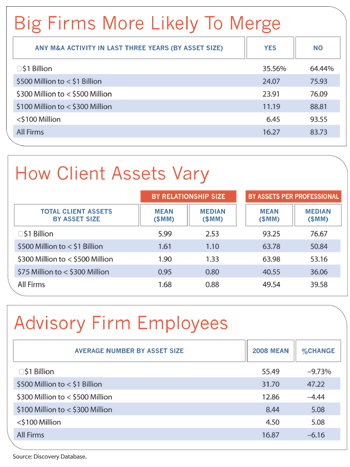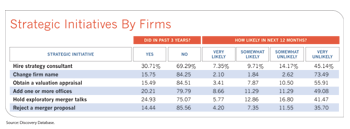"When the meltdown occurred in September things pretty well came to a halt, probably because capital was not available," he says. "Portfolio values dropped and consequently business values dropped. And the reason is that many buyers base the value on trailing-12-months revenue."
But he also says that after the first two months of 2009, the merger chatter started again. Tibergien says that the problems in 2008 have left some RIAs seeing weaknesses in their firms' structures and perhaps made them more amenable to the idea of merging with a larger firm, yielding to a bigger structure than can help them share overhead costs and create a bigger market presence.
"One of the things we've been finding through the course of our white papers is that the fastest-growing firms are the largest ones," he says. "Which is counterintuitive. You would think the fastest-growing firms would be the smaller ones. Because one would instinctively say that on a percentage basis, smaller firms would grow faster because the baseline is lower. But in reality the ones growing faster are the bigger firms because they have the physical capacity to grow."
There's another reason the biggest firms are growing at a faster rate. It's because they want to grow. That's why 35.6% of firms with more than $1 billion in assets said they had been involved in merger activity over the last three years, while only 11.2% of firms with between $100 million and $300 million had done so. Different size firms have different priorities.
Click here to view the full survey sponsored by 











